Is it possible to eat rice for gout: the benefits and possible harm of the product
A balanced diet for gout is not only the prevention of relapses and complications, but also a method of treatment. The correct diet is necessary to stimulate the immune system, contain the disease, and achieve long-term remission. A balanced diet increases the effectiveness of drugs, reduces their negative effects on the body, and reduces weight (if necessary).
Some of the most popular diet foods include rice. It is a nutritious product with minimal contraindications and a powerful antioxidant that regulates metabolic processes in the body. It neutralizes puffiness, removes uric acid salts from joints.
From the article you will learn how rice is useful for gout, in which cases it can harm the body, which variety is better to use and in what quantity.
The content of the article
Is it possible to eat rice with gout
Rice for gout is not only possible, but also necessary to eat... Vitamins, mineral salts, pectin substances in its composition increase the effectiveness of treatment, prevent possible complications.
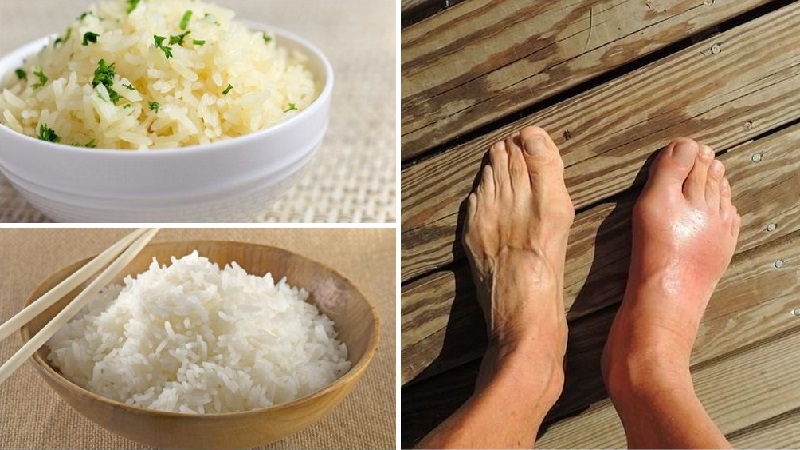
Nutritional and medicinal qualities of grain depend on its type, method of heat treatment and consumption rates. Therefore, it is important to know which type of rice is better to take, in what quantity, how to cook it correctly, with what products to combine.
Points for and against
Rice is useful for patients who need a balanced, energetically complete, but gentle diet.
The product has a versatile therapeutic effect:
- neutralizes and removes toxic substances from the body;
- removes excess fluid from the body, thereby reducing puffiness;
- provides fast and long-term saturation;
- promotes weight loss;
- regulates metabolism, reduces purine synthesis;
- normalizes acid-base balance;
- inhibits the activity of inflammatory phenomena;
- reduces the intensity of pain;
- increases endurance and performance;
- improves the functionality of the liver and kidneys;
- increases the formation and excretion of urine, with the current of which uric acid salts are removed from the body.
Experts' opinions that rice with gout is harmfulare associated with a history of contraindications. The least useful white round grain variety. Starch remains in the grains after grinding, which is why the product has a high glycemic index and calorie content.
For reference... Many manufacturers, in order to give the product an attractive appearance, polish the grains with a carcinogenic composition of glucose and talc, which increases the risk of cancer.
Which rice is preferable
Depending on the type of cereal, rice grains differ taste, aroma, color, shape, nutritional, dietary and beneficial properties. The most famous cereal is white rice.
At the factory, the grains are ground, cleaned from the bran nutritive shell and husk, the cereal acquires an even smooth shape and a relatively clean appearance. This variety is ideal for preparing everyday meals, but in terms of health benefits for the body it is considered the least suitable: along with the bran, a large amount of vitamins, macro- and microelements disappear.
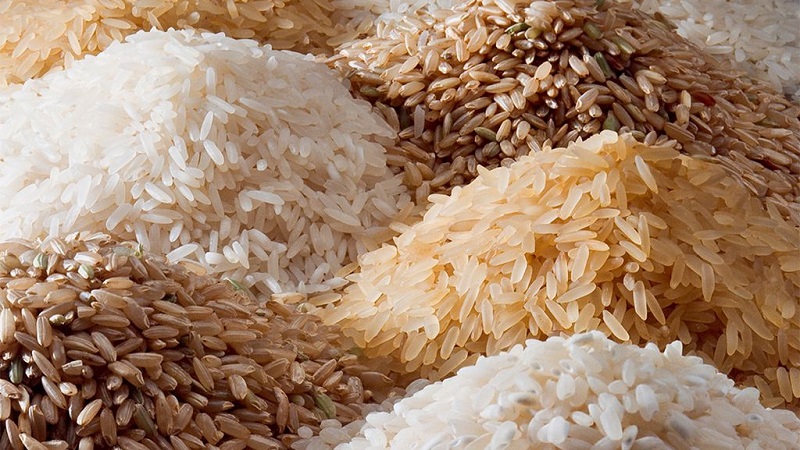
Unpresentable unpeeled cereals, on the contrary, will be useful... Parboiled white rice is valuable for the body with gout. Whole rice grains are exposed to hot steam without removing the bran shell, as a result of which nutrients pass directly into the grain itself.
Less tasty, but the most useful is the brown unpolished variety... Such rice tastes somewhat rough, has a specific taste, takes longer to cook, but retains amino acids, vitamins, and mineral salts in full.
In the usual diet and as a main component of the diet for gout, red and black rice are useful. However, due to the high cost, not everyone can afford this type of cereal. Therefore, given the availability, price and usefulness, white and brown long-grain rice will be the best product in the menu of medical nutrition for gout.
Rice during an exacerbation of gout
The best diet option during an exacerbation of gout is vegetarian... The patient is allowed milk porridges, liquid soups in water, fresh vegetables and fruits or prepared in a gentle way of cooking.
After the cessation or abatement of the pain, the menu is gradually expanded, in which rice is included in small portions.
In chronic form
Rice for chronic gout is included in the list of permitted foods... It is used in daily meals or to cleanse the body.
The benefits and harms of rice for disease
Experts say that regular consumption of unpolished rice, especially when cooked correctly, can significantly improve health. Nutritionists recommend including the product in the treatment menu for gout to prevent relapse.
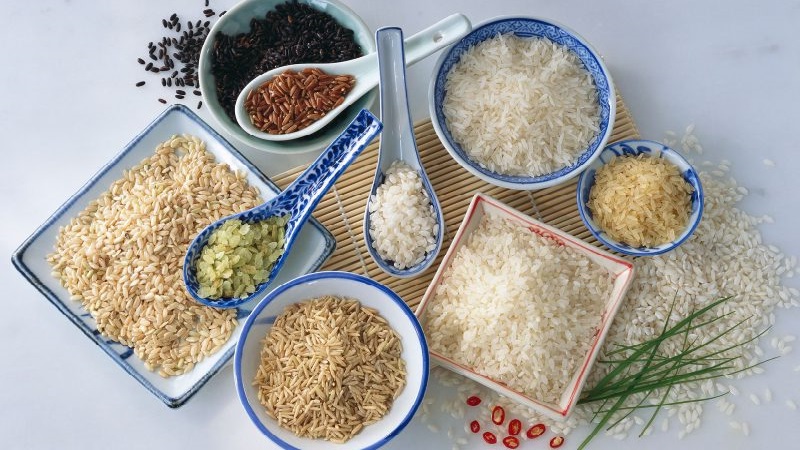
Benefits of rice for gout:
- stimulates the function of the liver and kidneys;
- enhances the synthesis of production and secretion of bile;
- lowers blood cholesterol levels;
- regulates acid-base balance;
- removes uric acid crystals from the body, the deposition of which provokes the development of gouty inflammation;
- cleanses the intestines from toxins and toxins;
- relieves pain and inflammation;
- reduces puffiness;
- important for bone health, prevents the risk of osteoporosis (decreased bone density);
- strengthens the immune system.
Thanks to the action of rice, recovery occurs in a shorter time, the need for drugs decreases, the functions of the musculoskeletal system are restored, a person quickly returns to his usual life.
However, rice is not always good for the body.... Its use with individual intolerance can cause an allergic reaction: rashes, peeling of the skin, itching, hives, increased lacrimation. Rice in large quantities, even in healthy people, can provoke constipation.
For reference... The shell of unpolished varieties contains biologically active components that impair the absorption of calcium and iron by the body.
Chemical composition
The nutritional properties of rice depend on the type of product. Consider the chemical composition, calorie content, the percentage of proteins, fats and carbohydrates of the most useful - brown unpolished.
The composition of the rice grain contains the following components:
- alimentary fiber;
- water;
- ash;
- starch;
- sucrose;
- B vitamins: thiamine, riboflavin, choline, pyridoxine, pantothenic and folic acids;
- vitamin E;
- vitamin K;
- beta-tocopherol;
- gamma tocopherol;
- macronutrients: sodium, phosphorus, magnesium, potassium, calcium;
- trace elements: zinc, copper, selenium, iron, manganese;
- essential and non-essential amino acids;
- trans fats;
- saturated, mono - and polyunsaturated fatty acids.
Read also:
Is it possible to eat eggplant for gout
KBZHU
The energy value of the dry product is 367 kcal. 100 g of rice contains: protein - 7.5 g, fat - 3.2 g, carbohydrates - 72.7 g.
During the preparation process, the nutritional value changes and is:
- calories - 123;
- proteins - 2.7 g;
- fats - 1 g;
- carbohydrates - 24 g.
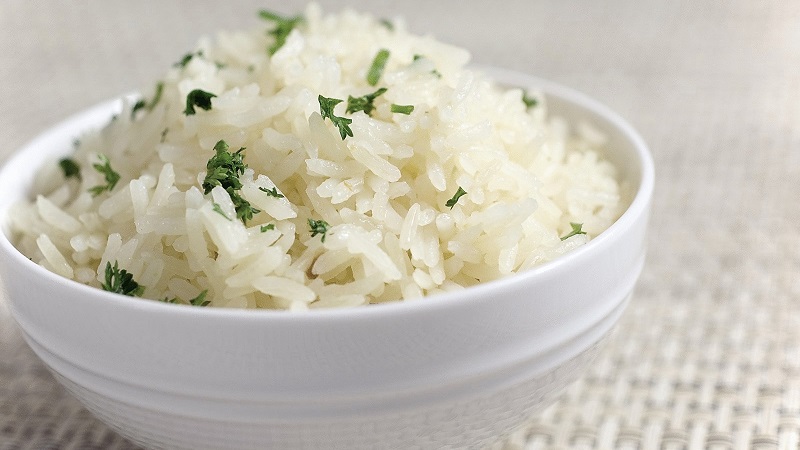
Rules for use for gout
When treating gout with rice, it is important to recommendations to help enhance the effect of the cereal:
- Use chlorinated water to wash the grain. It has a disinfecting effect. Otherwise, the contaminated product can provoke a stool disorder.
- Store the container with soaked rice in a cool place, always under a lid. The dishes must be washed well before use.
- The diet should be salt-free. Cannot be used for dressing spices, herbs, marinades, sauces, mayonnaise, ketchup.
- It is recommended to cleanse the body with rice once a week.
- Nutritional therapy involves restricting nutrients, so it is advisable to take vitamin complexes and calcium.
- The menu should contain as many fresh vegetables and fruits as possible.
- Nutritionists advise drinking plenty of alkaline mineral water between meals.
- Before cleansing, you need to prepare the body: in five days, start eating foods with a high percentage of fiber, drink plenty of fluids, herbal teas.
Pay attention to the expiration dates of cereals... A quality unpeeled brown variety is stored for no more than 12 months. If the manufacturer specifies other terms, it means that the rice was subjected to chemical processing, which increases the shelf life of the product, but reduces the beneficial properties of the grain.
Usage rates
Consumption rates depend on the age of the patient, the use of other foods in the diet, the presence of contraindications and the risk of side effects. On average, an adult needs 200 g of cooked product per day.
It can be useful:
In what form is it better to eat rice for gout
The most gentle way to cook rice is to steam or boil... Sometimes pre-infusion or steaming may be necessary. Under the influence of steam, hot water, the components pass into the grain itself, which maximally preserves the usefulness of cereals for the human body.
For reference. As a dressing, you can use lemon juice, natural yogurt with a low percentage of fat, vegetable oil or any other: pumpkin, linseed, sesame.
Several suitable recipes
There are many rice-based diet foodsto help normalize weight, cleanse joints, and improve overall health. Here are recipes for making rice soup, casseroles and rice with vegetables.
Rice soup
Ingredients:
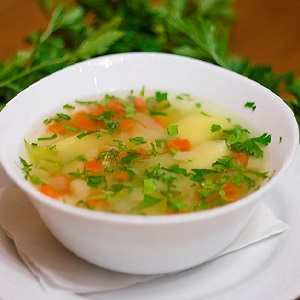 water - 1.5 l;
water - 1.5 l;- brown brown rice - 50 g;
- one medium onion;
- celery - 300 g;
- tomatoes - 2-3 pcs;
- bulgarian pepper - 1 pc;
- Beijing cabbage 150 g;
- parsley;
- olive oil - to a minimum.
Recipe:
- Rinse the groats several times with cool water. Pour into a saucepan, cook over low heat after boiling for another 15-20 minutes.
- At this time, sauté onion and finely chopped celery in vegetable oil.
- Pour over the tomatoes with boiling water, remove the skin, cut the pulp into small pieces.
- Chop the Chinese cabbage and bell pepper. Pour frying, vegetables, tomatoes into a saucepan with rice. After boiling, boil all the ingredients for 5 minutes. Garnish with parsley when serving.
Rice with vegetables
Products:
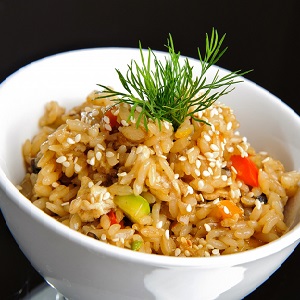 brown rice - 1 tbsp.;
brown rice - 1 tbsp.;- bell pepper - 1-2 pcs.;
- tomatoes - 2-3 pcs.;
- carrots - 1 pc.;
- greens, cilantro, garlic - to taste;
- olive oil - to a minimum.
How to cook:
- Soak rice grains for one hour. Then rinse and boil until tender.
- Dip the tomatoes in boiling water for 1-2 minutes to make it easier to remove the peel, cut into slices.
- Fry finely chopped garlic in vegetable oil, then add carrots, peppers, last of all - tomatoes, cilantro. Simmer vegetables over low heat for another 5 minutes.
- Mix the prepared vegetables with rice.
Raisin casserole
Ingredients:
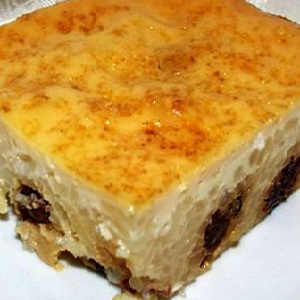 brown rice - 200 g;
brown rice - 200 g;- raisins - 100 g;
- milk with a low percentage of fat content - 200 ml;
- eggs - 1 pc.;
- sugar (fructose) - 1 tbsp. l .;
- bread crumbs - 20 g;
- vegetable oil - 1 tsp.
How to cook:
- Rinse the rice, steam with boiling water until softened.
- Pour the raisins in a separate container with hot water for 5 minutes under the lid until they swell. Drain the water, remove the remaining water with a paper towel.
- Grind the egg with sugar, add rice, raisins, milk, mix everything.
- Grease a baking dish with vegetable oil, put breadcrumbs in a thin layer, rice mass on top. Bake in a preheated oven for 10-15 minutes at 180 ° C.
Rice gout treatment
The effectiveness of rice treatment for gout depends on mechanisms of development and characteristics of the disease, the age of the patient, concomitant pathologies, and most importantly - from the product itself and the method of its preparation.
To get the desired result, nutritionists advise before starting a nutritional therapy, and then with a certain frequency, to cleanse the body with rice. To do this, pour 3 kg of rice with 10 liters of water. For the next seven days, it is necessary to thoroughly rinse the cereals daily, and then pour clean water each time. After a week, the grains will become transparent, which indicates the absence of starch in them.
Next, the cleaning process begins... Every day in the morning to cook porridge: 1 tbsp. l. Pour rice into boiling water, cook for 15-20 minutes. Eat unleavened rice without salt and sugar in the morning and evening. For the next four hours, no other food or water should be eaten in the breakfast field.
The healing effect will be noticeable in a month... The urine becomes cloudy - this means that toxins and toxins are really removed from the body.
Council. Apples help cleanse the body of salts. Therefore, nutritionists recommend eating more apples during the period of cleansing the joints with rice.

Contraindications
Contraindications to eating rice - individual intolerance, absence or insufficient bowel movement (constipation), renal, hepatic and intestinal colic.
Precautions
It is recommended to limit white rice in the diet of people with grade 3-4 obesity... Rice is eaten with caution with poor absorption of iron and calcium. If consumed frequently and in large quantities, rice can negatively affect the condition and functionality of the organs of the cardiovascular system.
In men, overeating rice cereal increases the risk of developing impotence.
Conclusion
Gout has a high risk of complications and requires a healthy lifestyle and careful dietary management. A therapeutic diet is a key factor in a favorable prognosis. The high concentration of vitamins and minerals allows rice to be used as a food source for gout.
Rice has a versatile effect on disease: it removes toxins and toxins, neutralizes puffiness, protects organs and tissues from the damaging effects of free radicals, and removes crystals of uric acid salts from the body. However, such a product is useful only if the consumption standards are observed and provided there are no contraindications.